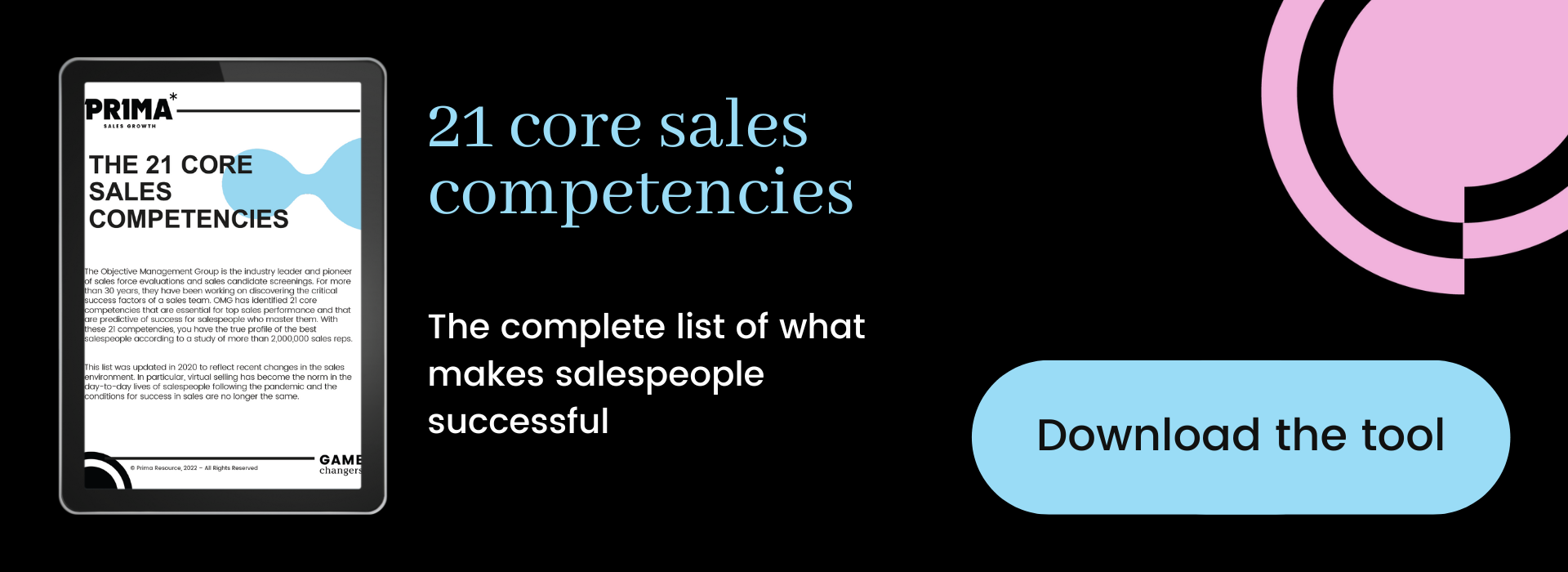 One of the biggest criticisms directed at sales reps is their lack of listening and understanding. Knowing that only 13% of customers believe that a seller can really understand their needs, there is a lot of work to be done to address this problem. If you can’t identify the problems and compelling reasons for your customers to buy, how can you hope to sell them a solution that will interest them?
One of the biggest criticisms directed at sales reps is their lack of listening and understanding. Knowing that only 13% of customers believe that a seller can really understand their needs, there is a lot of work to be done to address this problem. If you can’t identify the problems and compelling reasons for your customers to buy, how can you hope to sell them a solution that will interest them?
Since I’ve integrated what I call “mindful selling” into my job, I find that the quality of my conversations with my customers has improved and my relationships are stronger. Today, I am revealing my secret to help you become a better B2B salesperson, one who listens!
What is mindfulness?
Mindfulness is a notion drawn from the Buddhist teachings, representing an essential step in the liberation of the mind. The practice of mindfulness is now widely practiced in therapy centers and within workplaces.
Briefly, the idea is to give ourselves time to observe our emotions, feelings and thoughts without passing judgment. Mindfulness is also external and seeks to make us aware of external events, such as noises or surrounding objects, for example. Thus, mindfulness allows us to bring us back to the present moment, to better manage our reactions and to be more able to perceive the reality around us.
How to practice mindfulness in sales
Not only does the practice of mindfulness have many benefits for personal development, I also think it has a lot to offer to salespeople. I myself have integrated this approach into my daily life and I would like to share with you how I do it.
Practicing active listening
Listening is the key to success in sales.
Most sellers know it but don’t do it. Selling is not about giving information, it’s about getting information. But getting there takes a lot of patience and self-awareness.
Unfortunately, salespeople are quick to talk about their products and solutions and take a transactional approach rather than a consultative one, without necessarily realizing it.
To be attentive throughout all stages of the sales process, you have to stay in the moment. You must focus your energy on listening, with the intention of understanding so that you can help your clients later. When you actively listen, you may discover underlying problems or compelling reasons to buy.
Showing empathy
You often hear about empathy in sales as an asset for salespeople, especially at the beginning of the sales process. Empathy helps to better understand prospects’ problems, build trust and encourage the potential client to share valuable information.
Clients need to feel that they are understood, but salespeople tend to assume a lot their clients’ problems and the consequences of those problems. Don’t fall into this trap! The goal of a successful meeting with a client is to try to get them to verbalize how they feel, and what impact they perceive on their business and finances.
When you are completely in the present moment, you are able to truly listen, but also to prioritize the needs of others because you are not absorbed by your own thoughts and emotions. Then, by prioritizing others, you show empathy and demonstrate that your client’s concerns are taken seriously.
In the business world, we often talk about B2B or B2C, but keep in mind that selling is really P2P (people to people). At the end of the day, people buy from those they feel comfortable with!
Detaching yourself from your role
Let’s first talk about rejection management. It is a component of a salesperson’s sales DNA that can greatly affect results. According to Objective Management Group, it is one of the most common weaknesses among sales reps!
The problem in most cases is that salespeople will interpret the potential customer’s rejection as a personal rejection, not a rejection of their proposal. Take the example of the policeman’s profession. Many of them are insulted on a daily basis when they are doing their job. However, it is the uniform that makes people react, not the person who puts it on.
In sales, it’s similar. Salespeople are not the most popular professionals. Therefore, you must learn to make a clear distinction between the role and the individual, otherwise it will diminish the ability to handle objections and bounce back in sales conversations.
This is where mindfulness plays an important role. Following a rejection, it is important not to get carried away by negative emotions, by first acknowledging them and then accepting them. You will be in a better state of mind to accept criticism and remind yourself of the need to detach yourself from your role.
Detaching yourself from the result
For all sellers, the ultimate outcome is clear: closing the sale. Sometimes, I myself anticipate the outcome of a first base meeting too hastily. When time goes by and I still haven’t uncovered any compelling reasons to buy, I begin to get discouraged or think that I’ m wasting my time.
However, there is no point in being two steps ahead. This fixation on results can be charged with strong emotions that prevent you from being fully in the moment and aware of the conversation you are part of.
You need to clear your mind and devote yourself completely to listening to the person you are talking to. This way, you are more likely to assimilate the information you receive and then ask the right questions in return in order to find the compelling reasons to buy.
Best practices for a meeting
Now that I’ve explained the basics, I’d like to share some more practical tips to apply, whether it’s a prospecting call, a first base meeting or a follow-up activity you do with a client.
What to do before a sales meeting
- Take a moment before the call or meeting to take a few deep breaths and become aware of the present moment. Observe how you feel. Are you calm? Stressed out? Anxious?
- Don’t try to fight your emotions. Recognize them and then accept them so that they do not interfere with your goal.
- I also always try to take the time to define my intentions for the call or meeting, but also to define how I want to behave. For example, I want to be open to what the client is going to tell me.
What to do during the sales meeting
- Don’t let your ego get the upper hand in the meeting. I find that many salespeople give a lot of information in order to appear smart or to show that they are the best. Be aware of what you say and how well you listen during a meeting.
- Bring your attention back to the present moment when you feel you are drifting out of the conversation. Don’t think about the outcome.
- Take time to recognize your emotions during the meeting as well, because it helps to stay in the moment.
- Observe the other person’s emotions as well and ask questions about it. For example: “You seem worried, can you tell me why?” You’ II show that you are listening and that you care about their concerns.
- If something catches your attention, make a note of the key words so that you don’t let this information get into your head until it’s your turn to speak, otherwise you won’t listen.
What to do after the sales meeting
- Take a moment for yourself before continuing with another call or meeting. Take a few deep breaths and find a quiet place to debrief.
- Ask yourself the following questions: Did I behave the way I wanted to? Did I handle my emotions well? Did I listen? Did I focus my attention on the present moment? Even if the exchange went well, what should I do differently next time?
- Writing the answers to these questions in a journal can help you look back and be accountable for future encounters.
When I debrief, sometimes I notice that the client seemed difficult, that they were interrupting or just not listening to me. Yet I know that I will meet other clients like that along the way. A good lesson I’d like to share with you is that you can’t change your client, but you can change your response to them. When the client cuts me off, what emotion does it bring out in me? What could I do differently to change the dynamic?
Successful salespeople are those who know they have control over themselves and their business and don’t tend to blame external factors when things go wrong. This is the concept of responsibility, which is one of the 21 sales core competencies.
All this preparatory work is in fact a form of self-coaching. In the long term, the exercise will develop your level of self-awareness, as well as your level of finesse in perceiving what goes well and what goes wrong. You will be completely present.
Benefits of Mindful Selling
Building better relationships
Empathy, listening and attentiveness build trust in your relationships. A study conducted by Hubspot revealed that only 3% of prospects trust sales reps. Yes you read that right, only 3%!
When you manage to create a pleasant and understanding environment during your conversations, you develop strong relationships and gain a privileged place in the minds of your customers.
Selling value
By being present, attentive and able to ask the right questions, you will identify the key information that will help you develop a proposal that is valuable to your client and will help solve their problems.
Conclusion
To practice mindful selling is to be completely present, aware of oneself and one’s environment. It is also the recognition of emotions and the ability to control them.
Unfortunately, this is a concept rarely addressed in sales, as it is based on more conceptual, even spiritual aspects, but I encourage you to integrate it into your practice in order to become a better B2B seller.






